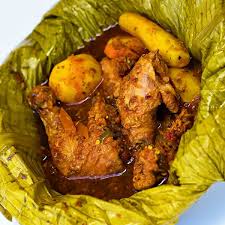Long before your safari vehicle rumbles through Uganda’s lush national parks, before you lock eyes with a mountain gorilla or hear the haunting call of a fish eagle over Lake Victoria, your journey begins with something far more intimate; a meal. In Uganda, food is not just nourishment; it is heritage, hospitality, and home. It’s where the story of the Pearl of Africa unfolds in unexpected, flavorful ways.
A Uganda safari promises adventure, golden savannas teeming with wildlife, misty mountains shrouded in mystery, and riverbanks that echo with the drama of predator and prey. But parallel to this wild beauty lies another, quieter experience, one steeped in simmering pots, smoky grills, and the rhythmic pounding of millet under a village tree. Here, food is memory. It is celebration. It is a bridge between traveler and local, past and present.
From the bustling roadside stalls of Kampala to the serene lakeside kitchens in the southwest, Uganda’s culinary landscape is a vibrant mosaic of indigenous ingredients and age-old traditions. You’ll encounter dishes that reflect the soul of the land, fresh matoke steamed in banana leaves, richly spiced groundnut sauce, or freshly grilled tilapia caught just hours before. Every meal invites you to sit, slow down, and connect, not only with the plate in front of you, but with the people, the culture, and the land that made it possible.
In this guide, we take you beyond the safari trail to explore the top local foods in Uganda you simply must taste during your Ugandan adventure. Prepare to discover a side of Uganda that can’t be seen from a jeep or captured through a camera lens, one that can only be experienced, savored, and remembered long after the journey ends.
Must-Try Ugandan Dishes
Every destination has a flavor, a scent that drifts from kitchen windows, a sizzling from roadside grills, a taste that lingers long after you’ve returned home. In Uganda, that flavor is bold yet comforting, humble yet complex, and deeply rooted in tradition.
These are not just dishes; they are edible landmarks in a nation bursting with cultural richness. Below are the must-try Ugandan foods that will nourish both your body and your sense of discovery on safari.
Matoke: The Soul of Ugandan Cuisine
No dish represents the Ugandan table more intimately than matoke. This starchy variety of green banana is peeled, steamed in banana leaves, and then gently mashed into a soft, dough-like consistency. It’s not flashy but it doesn’t need to be. Matoke is a warm, grounding presence, typically served as the base to rich sauces like groundnut stew or slow-cooked beef.
What makes it unforgettable is how beautifully it soaks up flavors, transforming a simple meal into something deeply satisfying. For many Ugandans, matoke is not just food it’s family, heritage, and comfort all wrapped in banana leaves.
Luwombo: A Royal Steamed Delicacy
Imagine the aroma of spiced meat, tender vegetables, and smoky banana leaves wafting from a traditional clay pot, this is luwombo. Said to have royal origins from the Buganda Kingdom, luwombo is much more than a stew. Chicken, beef, goat, or mushrooms are slow-cooked inside carefully tied banana leaves, allowing the ingredients to steam in their own juices.
The result? A moist, aromatic, and flavorful dish that tastes like a celebration. Often reserved for weddings or special gatherings, being served luwombo is an invitation into the heart of Uganda’s culinary history.
Rolex: Uganda’s Iconic Street Food
In Uganda, when someone offers you a Rolex, don’t check your wrist, check your appetite. Born on the bustling streets of Kampala, this quick and delicious snack consists of an omelet rolled inside a warm, freshly made chapati.
Add chopped tomatoes, onions, cabbage, and maybe a touch of chili, and you have a meal that’s affordable, portable, and endlessly satisfying. More than a street snack, the Rolex is a symbol of Uganda’s resourcefulness and creativity, a dish that takes simple ingredients and turns them into a cultural phenomenon.
Posho: The Powerhouse Staple
Often served in schools, homes, and roadside eateries alike, posho is Uganda’s fuel a thick, white porridge made from maize flour and water, served firm like a dough. It’s unassuming but indispensable, especially when paired with bean stew, sukuma wiki (collard greens), or groundnut sauce.
For those heading into the bush on safari, posho offers long-lasting energy and a taste of everyday Ugandan life. It’s a humble staple that quietly anchors meals across the country.
Pasted Groundnut Sauce: The Creamy Signature
If there’s one flavor that captures Uganda’s warmth and richness, it’s groundnut sauce. Made from roasted peanuts pounded into a smooth paste, this creamy, nutty sauce is a beloved companion to many dishes especially matoke, posho, and cassava.
It’s mild yet hearty, often enhanced with a touch of garlic, onion, and local spices. Whether served in a bustling market stall or a rural village, groundnut sauce brings comfort and depth to any meal. It’s not just a condiment, it’s a culinary embrace.
Katogo: Uganda’s Breakfast of Champions
Wake up in Uganda and you may be greeted by the hearty aroma of katogo bubbling on a stove. A traditional breakfast dish, katogo is more than a morning ritual, it’s a full, satisfying meal. Green bananas or cassava are cooked directly with meat, beans, offal, or groundnut sauce, creating a rich and filling one-pot dish.
It’s the kind of breakfast that prepares you for a long day whether that’s trekking through forests to find gorillas or navigating Kampala’s energetic streets.
Muchomo: Flame-Grilled Perfection
For carnivores, muchomo is where Uganda’s culinary magic happens over open flames. The name itself means “roasted,” and it applies to an array of grilled meats; beef, goat, chicken — often skewered and served straight from roadside vendors or local joints.
Seasoned with salt, spices, and sometimes a splash of lemon, muchomo is tender, smoky, and incredibly flavorful. Pair it with roasted gonja (sweet plantain) or a cold Nile Special beer, and you’ve got an experience that’s as communal as it is delicious.
Nsenene: The Crunch of the Rainy Season
Every culture has its culinary surprises, and Uganda’s is seasonal: nsenene, or fried grasshoppers. Harvested during the rains, these little critters are a crunchy delicacy that many Ugandans eagerly await each year. Once fried with a touch of salt and onion, they offer a nutty, savory bite that surprises even skeptical first-timers.
Eating nsenene isn’t just about taste, it’s about embracing a uniquely Ugandan moment, a connection to both nature and tradition.
Kikalayi: The King of Fried Pork
When Ugandans gather for a relaxed afternoon with friends, kikalayi often takes center stage. This dish features chunks of fried pork, crisped to golden perfection and usually served on a communal platter. Often seasoned with a medley of local spices and accompanied by raw cabbage, avocado, or chili, kikalayi isn’t just food, it’s a social experience. Whether shared over laughter in a countryside home or at a roadside eatery, this flavorful dish embodies Uganda’s spirit of togetherness.
Experiencing Ugandan Food Culture
A Uganda food tour goes beyond just eating. It’s about immersing yourself in the local way of life. Consider visiting a local market food Uganda to see the incredible array of fresh produce and spices. Engage with vendors, learn about their ingredients, and soak in the vibrant atmosphere.
For those eager to learn the secrets of Ugandan cooking, a cooking class Uganda offers a fantastic opportunity. You’ll get hands-on experience preparing traditional dishes, understanding the techniques, and truly appreciating the effort that goes into each meal. This “farm-to-table Uganda” experience is both educational and delicious.
Optional but Useful Items for Your Food Uganda Safari
While exploring Uganda’s culinary landscape, a few optional items can enhance your experience:
- Hand sanitizer: Essential for street food adventures.
- Reusable water bottle: Stay hydrated and reduce plastic waste.
- Small backpack/daypack: For carrying snacks, water, and souvenirs from local markets.
- Camera: To capture the vibrant food displays and your culinary discoveries.
- Open mind and adventurous spirit: The best ingredients for any food journey!
Conclusion:
Uganda’s local cuisine is more than just food; it’s an invitation to connect with the heart and soul of the nation. From the comforting embrace of Matoke Uganda to the adventurous bite of Nsenene, every dish tells a story, every flavor is a memory waiting to be made. Your Uganda safari is incomplete without indulging in these authentic culinary experiences.
So, pack your bags and prepare your taste buds for an unforgettable Uganda safari where incredible wildlife encounters are perfectly complemented by a vibrant and delicious food scene. The Pearl of Africa awaits with open arms and a plate full of flavors.

